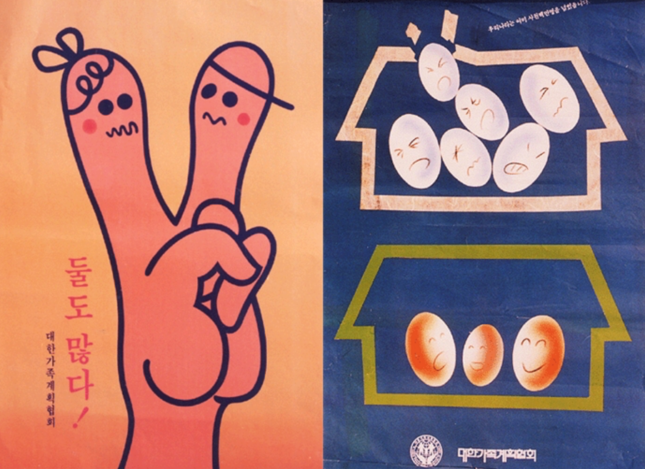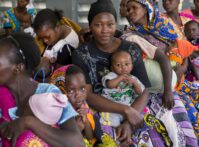-
“Too Many” to “Too Few”: South Korea’s Declining Fertility Rates
October 30, 2024 By Torunika Roy
In South Korea, pet strollers have become more popular than baby strollers. Sales reports from an e-commerce firm in that country noted that sales of infant strollers fell by 43% in 2023, while the sales of pet strollers rose by 57%—and consumer demand for pet products continued to grow into the first months of 2024. There has also been an uptick in the opening of veterinary hospitals that is outpacing the establishment of pediatric clinics in many neighborhoods.
This data reflects the rising trend of South Koreans choosing to adopt pets over raising children. And it is especially worrisome for a nation that has the world’s lowest fertility rate (0.72) as of 2023—far below the replacement level of 2.1 which is generally considered necessary to maintain a stable population.
While a decline in fertility rates is customary over time in alignment with increased development, South Korea’s government has played a historic role in influencing this trend. From the 1950 through the 1990s, Korea saw intensive nationwide campaigns to decrease the country’s fertility rate.
During the Korean War (1950-53), the fertility rate of South Korea stood at 5.02. By 1960, the total fertility rate (or “TFR”—the total number of children born to a woman in her reproductive age) stood at 6, with South Korean couples having three sons and two daughters ideally. These numbers led the government to develop family planning programs in order to reduce the high fertility rates that could hamper South Korea’s post-war economic recovery.
Slogans for Smaller Families
South Korea’s journey over four decades saw a swing between two extremes in its population trends. South Korea’s TFR was at a remarkably high level among developing countries after the Korean War. By 1983, however, the country’s fertility rate fell below the replacement level of 2.1 for the first time.
Economic development was the country’s key priority after the conflict. Beginning in 1961, South Korea’s government initiated a family planning (FP) program and advocated that citizens have a “small and prosperous family.” With the help of American contraceptive technology, Korean officials introduced birth control methods including vasectomy and condoms, and trained FP workers to spread awareness about them. By 1964, Intrauterine Devices (IUDs) such as Lippes Loop became popular among women, reflecting an acceptance of the idea of smaller families by couples in South Korea.
The government’s program included the promulgation of slogans urging people to stop “at two regardless of sex” by 1970. And couples who accepted the goal of one or two children were also provided with several significant benefits. For example, couples with two children or less were exempted from paying income tax. Those who opted for sterilization were prioritized in allotments of public housing, saw a reduction in child delivery costs, and benefited from housing loans.
Ultimately, this combination of popular campaigns with eye-catching posters and slogans and effective contraceptive methods successfully brought down the TFR of South Korea to 1.57 in 1996.

Left: Two Children is too many! Right: Our country’s childbirth has exceeded 40 million!
The Perils of Decline
Since 2015, South Korea has experienced a continuous drop in its fertility rate. This population decline now poses serious challenges ranging from a loss of human resources and decline in military conscripts to tangible impacts on South Korea’s gross domestic product (GDP), and an increasingly aging population.
The causes of declining fertility rates are manifold and complex, and include persistent patriarchal norms, gender inequality, high costs of living, child-rearing, and education, long working hours, and a double caregiving burden on women to care for both children and older populations. As a result, South Korea’s government has declared its declining fertility rate to be a “national emergency”, requiring decision-makers to focus on providing solutions to address the issue: such as balancing work and life, improving childcare with incentives, increasing parental leave allowances, providing low-interest loans for purchasing houses, and implementing flexible work hours.
Leaving Women Out of Policy Shifts
The South Korean government began implementing pronatalist policies in 2005 to increase the country’s fertility rates. Past policies sought to enhance the nation’s modernization by reducing unwanted births—and some observers wonder if they worked too well. Yet South Korea’s current pronatalist policies (including incentives to couples having more than one child, tax reductions, and provision for childcare services and medical facilities) are not proving to be as effective, especially since they lack input from women.
Some Korean women believe that the government has intervened in reproductive rights by controlling their bodies and undermining their choices throughout recent history. Not only do South Korean women cite unfavorable socioeconomic conditions for raising children, but they also blame government and society for not respecting their needs and for treating them as resources for serving the nation.
This has not only been a recent problem. During the nation’s push for population control, many Korean women returned to the clinics for removal of Lippes Loops due to negative side effects that included pelvic infections, discomfort, iron deficiency, painful menstruation. Yet most doctors in that era advised women that “minor side effects were not a reason for removal.”
As policy has moved in the opposite direction, women have felt equally vexed. In 2021, the Seoul government published stereotypical guidelines to prepare for the arrival of a new child, including advice to prepare undergarments, socks, and shirts for the husbands before the delivery, as well as buying hairbands so that mothers will not look untidy after childbirth.
Although today’s pronatalist programs seem to provide “support,” their underlying ideas still promote traditional gender roles. It also does not help that Korean women face the so-called “motherhood penalty” when they quit their jobs after childbirth, especially when the burden of childcare and household chores continues to fall upon women. These career breaks after childbirth also mean that women face wage gaps and slow promotions once they do resume working.
As we have seen, South Korean women’s reproductive choices have been influenced greatly by the state’s shifting priorities. The post-war national management of population through sterilization programs was reversed when a shrinking population challenged South Korea’s economy and security. Yet the results of the post-war policy were undeniable. A shift in family size from large to nuclear within four decades produced a culture of comfort and modernization. Education and family planning programs gave women more opportunities.
Altering a four-decades-old trend will be a challenge— and women’s input into policies is essential. Instead of focusing on providing incentives, South Korea’s government must account for its citizens’ diverse interests and needs as it makes necessary structural changes (including addressing gender inequality, encouraging men to share household chores, and creating flexible working hours). If it does so, new policies may offer a hopeful solution for South Korea’s declining demographic trends.
Torunika Roy is a PhD candidate at Jawaharlal Nehru University, New Delhi, India. Her research is focused on low fertility rates and gender issues in South Korea.
Sources: Chosun; CNN; East Asian Science, Technology and Society: An International Journal; Hankyoreh; Journal of Korean Medical Science; Korea Institute or Health and Social Affairs; Korea Times; New York Times; PRB; Rockefeller Archive Center; Studies in Family Planning; Yonhap News Agency, Yonsei Medical Journal.
Photo Credit: Cover Image: A couple walking on the trail with a dog. Stock for you/Shutterstock.com; In-Text Image: The Grand Narrative.
 A Publication of the Stimson Center.
A Publication of the Stimson Center.








